#acne lesions
Explore tagged Tumblr posts
Text
Hormones, genetics and food choices: the complex yet easy picture behind acne
On the origins of acne Acne vulgaris is a chronic inflammatory skin condition that primarily affects adolescents and young adults. It has a prevalence of 80% in individuals aged between 11 and 30, therefore affecting approximately 9% of the world population. The complex etiology of acne involves genetic, hormonal and environmental factors. Acne presents with inflammatory and non-inflammatory…

View On WordPress
#acne vulgaris#high blood glucose#hyperinsulinemia#inflammation#keratinocytes#lifestyle#mental health#microbiota#quality of life#skin lesion#social impact#western diet
0 notes
Text
The Ultimate Guide to Understanding Acne Laser Treatment: How Does It Work?

Acne is a universal challenge, affecting millions worldwide, irrespective of age or skin type. It's a condition that can significantly impact one's self-esteem and quality of life. Traditional treatments have varied effectiveness and often come with many side effects. However, laser technology has introduced a groundbreaking approach to managing acne and ensuring long-term skin health. This guide delves into the innovative world of acne laser treatment, focusing on its mechanisms, benefits, and cutting-edge AviClear laser treatment and Laser Genesis treatments.
Understanding Acne Laser Treatment
Acne laser treatment is a sophisticated procedure that uses focused light to penetrate the skin deeply, targeting the root causes of acne without harming the surrounding tissue. This technology is designed to tackle various skin issues, including persistent acne, by reducing oil production, eliminating harmful bacteria, and promoting skin regeneration.
How Does Acne Laser Treatment Work?
The principle behind acne laser treatment is relatively straightforward yet profoundly effective. The laser emits a specific wavelength of light absorbed by the skin. This light energy is then converted into heat, targeting overactive sebaceous glands to reduce oil production, one of the primary contributors to acne formation. Additionally, the heat helps to kill acne-causing bacteria and stimulates the skin's natural healing processes, encouraging the production of new collagen and reducing the appearance of existing acne scars.
Types of Acne Laser Treatments
AviClear Laser Treatment: AviClear is a revolutionary approach to acne laser treatments. It specifically targets and diminishes the sebaceous glands' activity, effectively reducing oil production and acne outbreaks. This treatment is known for its precision and ability to provide long-lasting results without the side effects associated with traditional acne medications.
Laser Genesis Treatment: Laser Genesis is another innovative treatment beyond treating acne. It's designed to promote vibrant and healthy-looking skin by addressing various concerns, including redness, enlarged pores, fine lines, and scars. By gently heating the upper dermis well below the skin's surface, Laser Genesis stimulates collagen regrowth, repairs tiny dilated capillaries that cause redness and improves the skin's overall texture and tone.
Benefits of Acne Laser Treatment
Effectiveness: Acne laser treatment offers a high success rate, especially for those without significant improvements with traditional therapies.
Minimal Side Effects: Unlike some acne medications, laser treatments have minimal side effects, making them a safer alternative for long-term acne management.
Non-Invasive: These treatments are non-invasive, meaning there's no need for incisions or needles, ensuring a more comfortable experience for the patient.
Quick Sessions: Each session is relatively quick, usually lasting between 15 to 30 minutes, with minimal downtime, allowing patients to return to their daily activities immediately.
Versatility: Laser treatments can address multiple skin issues simultaneously, from reducing acne and oil production to improving skin texture and reducing the appearance of scars.
Skin Lesions Removal
In addition to treating acne, laser technology is highly effective in removing skin lesions. This includes benign growths, sun spots, and other skin irregularities. The precision of laser treatment ensures that only the targeted lesion is treated, leaving the surrounding skin untouched.
Laser Obsession's Contribution to Acne Laser Treatment
While exploring the realm of acne laser treatment, it's essential to mention the contributions of specialized clinics like Laser Obsession. They offer a range of non-invasive medical aesthetic treatments, including the latest acne laser technology. With certified professionals and state-of-the-art equipment, Laser Obsession provides personalized care tailored to each individual's skin type and concerns. Their expertise in AviClear laser treatment and Laser Genesis treatments ensures clients receive the most advanced and effective solutions for acne and skin rejuvenation.
In conclusion, acne laser treatment significantly advances dermatological care, offering a safe, effective, and non-invasive solution to acne and related skin issues. With technologies like AviClear and Laser Genesis, individuals now have access to treatments that address acne symptoms and promote overall skin health and beauty. As we continue to embrace these innovative treatments, clinics like Laser Obsession play a pivotal role in transforming skin care practices, making clear, healthy skin a reality for many.
0 notes
Text
it’s actually really bad how uneducated & miseducated people are about this so
You can get tested for herpes simplex (hsv) by: 1) having a skin lesion that you get swabbed, or 2) a blood test
false negatives for blood tests are very common
asymptomatic herpes is extremely common (it is estimated that between 50-90% of the population may have hsv1 and most people do not know they have it)
people can go years between contracting hsv and getting their first outbreak. symptoms can develop at any time. plenty of people never develop symptoms at all. it is also possible to mistake an hsv flareup for pimples, a rash, ingrowns, or any number of other minor skin afflictions.
in the US, the cdc *does not recommend* routine testing for hsv. standard batteries of std testing do not test for hsv. again, they may swab a lesion if you’ve got one, but they will almost never administer blood tests because the blood tests are unreliable. therefore, even if you get tested regularly and ask to be tested “for everything”, *if you have never had a lesion that you got swabbed, it is highly unlikely that you have ever gotten tested for hsv*. SOME places will test for it if you specifically ask/if you’ve had a known exposure, but not all.
and if you were asymptomatic and did get blood tested, you may have had a false negative anyway.
the moral is not to panic that you might have herpes after all, but that correct info is good, + stigma is stupid when it’s fairly likely that a solid half of your acquaintances have hsv (and it impacts most people’s lives either not at all or less severely than cystic acne).
info
933 notes
·
View notes
Text
youtube
I explain how this amazing procedure stimulates collagen synthesis and enhances skin cell function, leading to improved texture, reduced fine lines, smaller pores, and diminished acne scars. But here's the exciting part - research shows laser resurfacing actually decreases your risk of skin cancer and precancerous lesions!
21 notes
·
View notes
Text
Clear skin is more than just skincare: Gut Health
(A science based read)

What you eat is shown through your skin and on body. If your constantly shoving junk down your throat, junk is what will be shown on you. Essentially what you eat is what you are.
Eat bad -> bad skin
Eat good -> good skin
If your constantly breaking out and you feel icky. You need to figure out what is up with your gut health.
Research suggests many skin disorders are linked to an altered or unbalanced gut microbiome.
“When the relationship between gut microbiome and the immune system is impaired, subsequent effects can be triggered on the skin, potentially promoting the development of skin diseases.”
“13 Several dermatologic conditions, such as acne, atopic dermatitis, psoriasis, and rosacea are linked with intestinal dysbiosis. 223 Many studies have associated gastrointestinal health with skin homeostasis and allostasis, and there is evidence of a bidirectional interaction between the gut and the skin.”
Diet, drugs and other consumed substances affect skin through gut microbiome:
“Several studies have related the diversity and pathogenicity of the gut microbiome to skin disorders, which can be significantly altered by long-term dietary patterns. 43,105–107 Diet can affect the skin condition both positively and negatively through alteration of the gut microbiome, indicating that there is a relationship between the skin and the gut. 16 Not only diet, but also many synthetic and natural products consumed by humans as drugs can provide direct and indirect evidence on the connection between gut microbiome and skin.”
High and low fat diet:
“In the gut, a diet high in industrial trans-fatty acids increases the number of harmful microbes (such as Desulfovibrionaceae and Proteobacteria) while suppressing populations of advantageous microorganisms (e.g. members of Bacteroidetes, Lachnospiraceae, and Bacteroidales). 121 Refined and hydrogenated oils (e.g., soybean, sunflower, safflower, canola, corn, and vegetable oils) can cause inflammation in the gut, which then manifests on the skin.”
Industrially produced trans fat can be found in margarine, vegetable shortening, Vanaspati ghee, fried foods, and baked goods such as crackers, biscuits and pies. Baked and fried street and restaurant foods often contain industrially produced trans fat.
Prebiotics:
“133,134 Prebiotics, such as fructooligosaccharides, galactooligosaccharides, inulin, polydextrose, lactulose, sorbitol, and xylitol are a promising group of compounds that modulate the gut microbiome and can also provide skin benefits.”
“The effect of prebiotics on the skin condition is also obvious. For example, a Lactobacillus extract helps to reduce the size of acne lesions as well as inflammation by reducing skin erythema, improving skin barrier function and lowering the microbial counts on skin.”
types of prebiotics include:
Chicory root
Garlic
Onion
Dandelion greens
Apples
Bananas
Jerusalem artichoke
Asparagus
Probiotics:
“Probiotics can prevent gut colonization by pathogens and support anti-inflammatory responses by producing metabolites with anti-inflammatory properties. The most common probiotic microbes currently in use belong to the genera Bacillus, Bifidobacterium, Enterococcus, Escherichia, Lactobacillus, Saccharomyces, and Streptococcus. 143,144 Several beneficial effects of probiotic consumption have been demonstrated on many dermatological conditions, thus proving the existence of the gut-skin axis.”
Common types of probiotics include:
Lactobacillus: This is a common probiotic found in fermented foods, such as yogurt.
Bifidobacterium: This probiotic is found in some dairy products and helps with the symptoms of irritable bowel syndrome.
Saccharomyces boulardii: This is a type of yeast found in many probiotics. You can find these probiotics and more in supplements and select foods.
Yogurt
Buttermilk
Cottage cheese
Miso soup
Sauerkraut
Kefir
Kimchi
Tempeh
Protein:
“The proteins from animal-based food sources may have better effects on gut microbiota compared to plant-based food sources due to the higher protein digestibility of animal proteins and the fact that the digestion of plant proteins may be limited by the presence of antinutritional factors found in plants [67]. Animal proteins have more balanced essential amino acids than plant proteins [68,69] and are thus considered higher quality protein.”
“Dairy and meat protein intake at a recommended level increased the abundance of the genus Lactobacillus and maintained a more balanced composition of gut microbiota compared to soy protein, which is beneficial to the host [25,26,28].”
“Your body makes lots of different peptides, each of which has a different role. Scientists can also make synthetic peptides in the lab. Companies have been adding peptides to skin care products for decades.”
High protein foods:
Salmon
Chicken breast
Tuna
Red split lentils
Tofu
Greek yogurt
Fibre:
“Dietary fibre is comprised of plant-based carbohydrates that cannot be metabolised by digestive enzymes encoded in the human genome, such as amylase. Instead, fibre can only be metabolized by certain species of gut microbiota through anaerobic fermentation, with the main product of this reaction being SCFAs.”
“Dietary fibre is a carbohydrate in plant foods, such as whole grains, vegetables, fruit, and legumes, which have been dominant in human diets for millions of years. From the Paleolithic era, when the hunter-gatherers mainly ate fruit and wild grains, to the agricultural era, when crops began to be cultivated, the ancients consumed more than 100 g of various digestible and indigestible dietary fibre from plants per day [1,2].”
Fibre rich foods:
Chia seeds
Lentils
Broccoli
Avacado
Carrots
Red kidney beans
Raspberries
XOXO
#angelacademy#self improvement#that girl#glow up#beauty#skincare#gut health#digestivehealth#digestive system#digestivewellness#clear skin
18 notes
·
View notes
Text

Chapter 4: Medical Esthetic Procedure Contraindications

So you’re considering getting some medical esthetic procedures done. That’s hot! But before you schedule an appointment or consultation here’s a quick guide of contraindications to be aware of!!

What is a Contraindication?
A contraindication is a condition we look for in the medical field that serves as a reason to not continue forward with a medical treatment due to potential harm the treatment may cause to a patient!
Laser Hair Removal:

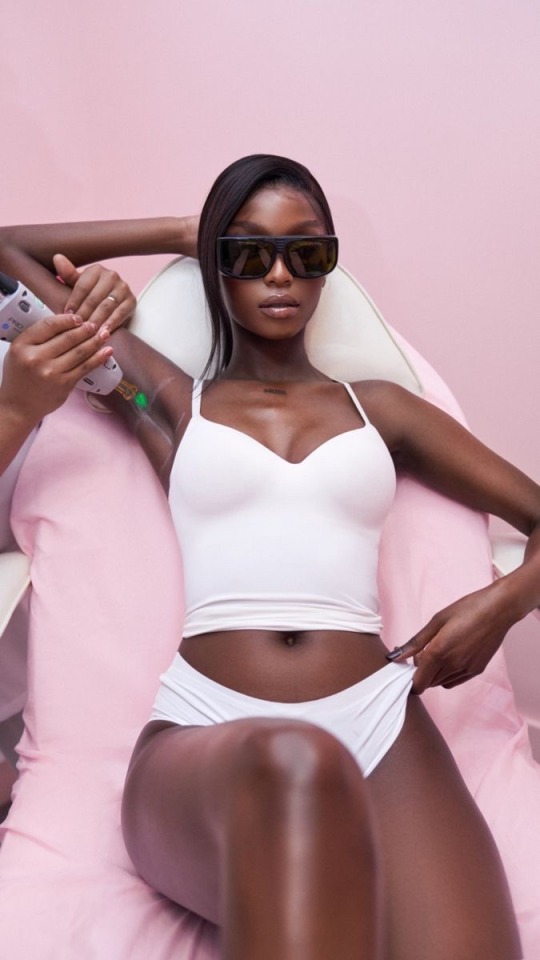
Herpes and Cold Sores: Can you get laser hair removal with herpes or cold sores? Yes! But only if there is not an active breakout. We do warn the clients that the lasers we use are powerful enough to cause a herpes or cold sore breakout to occur so please proceed with caution!
Retinol: Use of Retinol’s are a huge no no! It can cause severe damage, burning or scaring if a laser is used! If you are on Retinol please stay off of it for 1 week before your laser hair removal procedure.
Seizures + Epilepsy: If you have a history of epilepsy please refrain from getting any laser or light treatment as it can induce seizures.
Bacterial Skin Infections: Infections can spread to other parts of the body if a laser is used.
Impetigo: This highly contagious superficial skin infection is something we as your medical esthetician should be aware of before continuing with treatment.
Cellulitis: This infection of the dermis and subcutaneous tissue should be cleared before you continue with any laser or light therapy.
Folliculitis: Laser treatments are not performed in areas of folliculitis but several hair removal lasers have been approved by the FDA for pseudofolliculitis barbae treatment.
Fungal Infections: Ringworm and Yeast Infections can not be treated with laser or light therapy until cleared.
Viral Infections: Active viruses are considered major contraindications for laser and light therapy.
Shingles: If there is an active outbreak laser treatment will not be used.
Common Skin Warts (HPV): Although some lasers are used to remove persistent warts, they are still considered contraindications.
Atopic Dermatitis (Eczema): You will not be disqualified as a candidate for laser treatment, unless the outbreak is in an area of proposed treatment.
Open Lesions, Rashes and Sunburns: This includes open lesions from picking at the skin. Any unknown lesions or rashes will be considered contraindications. Sunburns are known to disrupt the skin barrier and are considered contraindications. Any suspicious lesions should always be evaluated by a physician prior to treatment.
Accutane: You must be off of Accutane for at least six months to a year, depending on a physician’s  preference prior to treatment with laser or light therapy.
Immediate Post-Operative Face Lift, Blepharoplasty or Neck Lift: Treatment is avoided for clients who are in post op from these treatments until a physician has given approval for laser or light treatment. 
Pregnancy and Lactation: Pregnancy and lactation are considered contraindications women who are pregnant or lactating, should wait after pregnancy + breastfeeding so a child will not be exposed before beginning or continuing laser or light treatment. 
Laser Tattoo Removal:
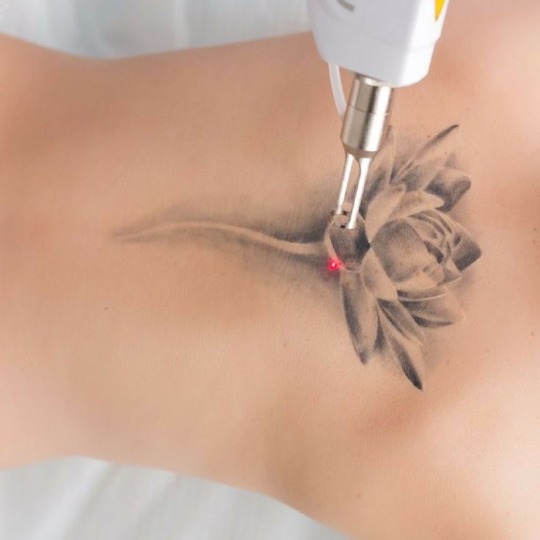

Laser tattoo removal shares the same contraindications as laser hair removal.
Red Tattoo Ink: Red tattoo ink is known to be allergenic. If you have experienced an allergic reaction to red tattoo ink, be aware that another allergic reaction may occur if a red ink tattoo is being removed by laser. 
Retinol + Accutane
Pregnancy and Lactation
Bacterial Infections
Viral Infections
Fungal Infections
History of Epilepsy or Seizures
Open Skin Lesions, Sunburns and Rashes
Microneedling:
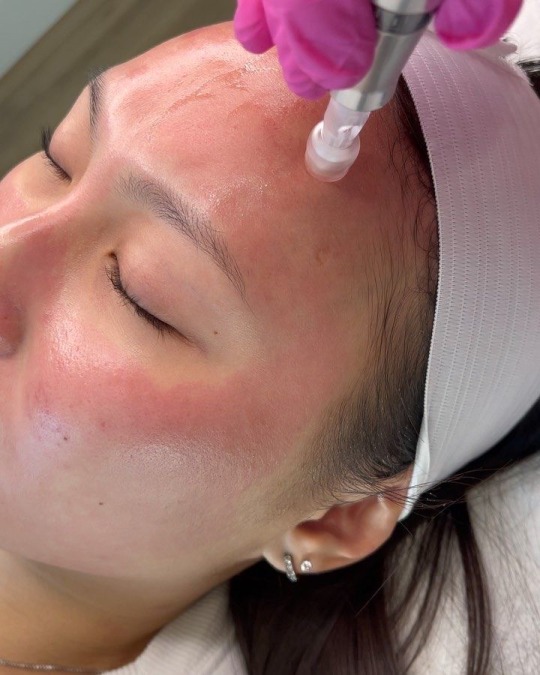

Herpes + Coldsores: Please wait until an outbreak is fully healed! Estheticians can avoid microneedling the mouth area if you do have an outbreak but it is best to wait until the outbreak is fully healed to avoid any spreading.
Active Acne: Areas of active acne can be skipped over but if there is an all over outbreak it is best to wait.
Rosacea: Clients with vascular rosacea can receive treatment, but not pustular or nodular rosacea wait until the information has settled.
Atopy, Asthma, Hay Fever and Allergies: Any patient with a history of allergies maybe prone to urticaria, after needling due to the release of histamines.
Anticoagulants: Any supplements, known to prolong, bleeding time, may not necessarily be discontinued from treatment, but the risk of bruising increases.
Drugs and Supplements Associated with Photosensitivity: Any drug and supplement that can cause photosensitivity including Accutane is considered a contraindication. 
Fitzpatrick III and Above: Those with darker skin tones are not disqualified from treatment but it should be known that skin will appear puffy, bruising, if present might be visible in thin skinned areas and erythema (skin redness)  when super-imposed on brown, appears much darker. Patience with melasma or post. Inflammatory hyperpigmentation must understand that lesions will appear darker for several months before improving.
PSA: There are certain ingredients to avoid using when it comes to dermal needling. Ingredients to avoid include preservatives, fragrances, emulsifiers, emollient acids, dyes, coloring agents, and UV filters 
Before receiving a dermal needling treatment, you may be asked by your provider about allergy or medication, history, blood pressure/medication, bleeding disorders, eczema, psoriasis, immune system disorders, keloid, scarring, major illnesses, heart conditions, anemia and a lot of other general medical questions.
Body Contouring

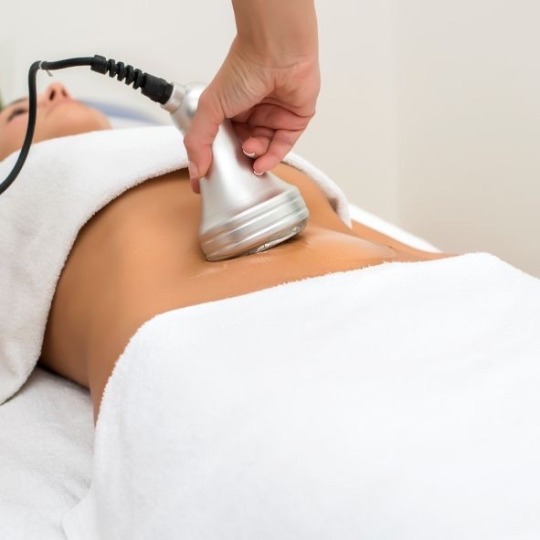
Pregnancy and Breast-Feeding
HIV/AIDS
All forms of Cancer
Undergoing Chemotherapy
Immunodeficiency
Lupus
High Blood Pressure
Uncontrolled Diabetes
Keloid Scarring
Excessive Pigmentation
Vein Inflammation
Steroid Medication
Chemical Peels + Laser Resurfacing
Sunburn
Recent Surgery or Scars: Wait 6 months
Open Lesions, Skin Diseases, Inflammation, Varicose Veins, Infection, Metal Implants, Metal Screws, Metal Contraceptive Coil + Prothesis/Silicone Implants: Area will be avoided
Antibiotics: Must wait until completed medication course
Depilatory Creams: Wait 2 weeks
IPL or Laser Treatment: Area that received laser or light therapy must wait 2 weeks before receiving body contouring.
Areas with Botox: Wait 3 months before receiving body contouring.
Areas with Dermal Filler: Wait 2 weeks before receiving body contouring.
Sun Tan: Will be avoided
Chronic Inflammation: Speak with your healthcare provider before proceeding forward with a body contouring treatment.
PSA: Before receiving body contouring, your hydration levels will be checked your body must be 40% or higher for your hydration level. Hydration levels below 40% can cause cat like scratch sensations when receiving body contouring. Which is why low levels of hydration are considered a contraindication and you must wait until your hydration levels are at 40% before receiving treatment.

30 notes
·
View notes
Text
New's T skincare (and more) recs🏳️⚧️🥄
Hello! I'm a enby spoonie trying out a low dose of testosterone for gender and health reasons. Some of you asked how I'm managing my skin now that it's oilier on T, so here are some recs. If you find any of this information helpful, please consider dropping a tip in my ko-fi, becoming a Patron, or donating to my GoFundMe. Every bit helps me afford medical care and stay afloat when I'm too sick to work. ❕ Disclaimer: I'm not a doctor or an expert, just an ex-retail worker with a special interest in skincare. These are products/routines that work for me, so you'll have to experiment to find out what your skin responds to. Always patch test and if your skin really struggles on T, definitely talk to a dermatologist. This isn't my entire collection of skincare, just stuff that is especially good for managing/healing acne. I'll still be listing some products I don't have yet but plan to get in the future as suggestions. If you want to know about other things like under eye care, send an ask and I'll try to answer. Also, you don't have to be on T to try any of this stuff out. If you have some of the same skin concerns I do, then some of these things may be a good match for you. Even before T, it took work to keep my skin clear. It just takes more intensive care now.
ʙᴇꜰᴏʀᴇ ᴡᴇ ɢᴇᴛ ɪɴᴛᴏ ɪᴛ: 𓈒⠀𓂃⠀⠀˖⠀𓇬⠀˖⠀⠀𓂃⠀𓈒
✨Keep in mind that I'm really extra and having a fancy routine like this is part of how I self-regulate. I also have different routines depending on time of the year, time of day, my cycle, whether or not I wore sunscreen/makeup/a mask that day, etc. You absolutely do not need to go as hard as I do with so many products. If you're completely new to skincare, it's fine to keep it simple with cleanser, toner, and moisturizer (and sunscreen when going out!), with masks or spot treatments as needed. 💊A little more info on my situation: I'm on T in short cycles for subtle changes and it turns out that T is really good at treating some chronic illness as well, especially autoimmune disorders. I'm diagnosed with ulcerative colitis, type 2 narcolepsy, fibromyalgia, myalgic encephalomyelitis (CFS), and more. I've been "suspected" for RRMS for a few years due to all of my neurological symptoms but my MRI's don't show much other than some bulging discs. I'm not officially diagnosed yet but am suspected for endometriosis, with an enlarged ovary, backed-up kidneys, unidentified lesions on my colon/bladder, and daily debilitating pelvic/back pain. My periods kill me dead but even when not on them, I'm still in a lot of pain all the time. So far the T really helps with fibro pain and definitely gives me more stamina. My periods have been easier too. Still not pleasant, but not killing me as much. The fact that I've been able to work even one day on my period the past few months is a huge improvement, even if I'm still doubled over with a heating pad. One concern I had with starting T was my skin. I've never had severe acne, but I'm still acne prone as an adult. Luckily I worked in skincare for a while, so I've had a solid skincare routine for a long time now. Since starting T, I've been refining my routine in order to minimize breakouts and heal ones that do happen. The same goes for my hair/scalp routine since I have psoriasis and have to do clarifying treatments twice a week anyway. T can carry the risk of more oil, clogging, and fall out. This post will mostly be about skin but I'll add some of my hair and other recs too. ─── ・ 。゚☆: *.☽ .* :☆゚. ───
♥𝚃𝚊𝚋𝚕𝚎 𝚘𝚏 𝙲𝚘𝚗𝚝𝚎𝚗𝚝𝚜♥ I: Skincare 1. 𝘾𝙡𝙚𝙖𝙣𝙨𝙚𝙧𝙨 𝘢. 𝘔𝘰𝘳𝘯𝘪𝘯𝘨 𝘤𝘭𝘦𝘢𝘯𝘴𝘦𝘳𝘴 𝘣. 𝘌𝘷𝘦𝘯𝘪𝘯𝘨 𝘤𝘭𝘦𝘢𝘯𝘴𝘦𝘳𝘴 2. 𝙈𝙖𝙨𝙠𝙨/𝙩𝙧𝙚𝙖𝙩𝙢𝙚𝙣𝙩𝙨 𝘢. 𝘞𝘢𝘴𝘩-𝘰𝘧𝘧 𝘮𝘢𝘴𝘬𝘴 𝘣. 𝘚𝘩𝘦𝘦𝘵 𝘮𝘢𝘴𝘬𝘴 𝘤. 𝘚𝘱𝘰𝘵 𝘵𝘳𝘦𝘢𝘵𝘮𝘦𝘯𝘵𝘴 3. 𝙏𝙤𝙣𝙚𝙧𝙨 4. 𝙎𝙚𝙧𝙪𝙢𝙨 𝘢. 𝘔𝘰𝘳𝘯𝘪𝘯𝘨 𝘴𝘦𝘳𝘶𝘮𝘴 𝘣. 𝘌𝘷𝘦𝘯𝘪𝘯𝘨 𝘴𝘦𝘳𝘶𝘮𝘴 5. 𝙈𝙤𝙞𝙨𝙩𝙪𝙧𝙞𝙯𝙚𝙧𝙨 𝘢. 𝘔𝘰𝘳𝘯𝘪𝘯𝘨 𝘮𝘰𝘪𝘴𝘵𝘶𝘳𝘪𝘻𝘦𝘳𝘴 𝘣. 𝘌𝘷𝘦𝘯𝘪𝘯𝘨 𝘮𝘰𝘪𝘴𝘵𝘶𝘳𝘪𝘻𝘦𝘳𝘴 6. 𝘽𝙤𝙙𝙮 𝙖𝙘𝙣𝙚 𝙘𝙖𝙧𝙚 7. 𝙀𝙭𝙩𝙧𝙖 𝙩𝙝𝙞𝙣𝙜𝙨 𝙩𝙝𝙖𝙩 𝙘𝙖𝙣 𝙝𝙚𝙡𝙥 8. 𝙀𝙭𝙖𝙢𝙥𝙡𝙚 𝙧𝙤𝙪𝙩𝙞𝙣𝙚𝙨 𝘢. 𝘔𝘰𝘳𝘯𝘪𝘯𝘨 𝘳𝘰𝘶𝘵𝘪𝘯𝘦 𝘣. 𝘌𝘷𝘦𝘯𝘪𝘯𝘨 𝘳𝘰𝘶𝘵𝘪𝘯𝘦
II: Haircare (coming soon) III: pH care (coming soon)
✦•······················•✦•······················•✦ Skincare 1. Cleansers

I have a lot of cleansers because I like to be prepared for every situation, so only a few are pictured here and only ones related to acne care will be listed below. If you want to know what other kinds of cleansers I use, send me an ask! a. Morning Cleansers - In the morning, I usually just do wipes to avoid stripping too much. I'll only actually do a cleanser with water if I feel particularly oily or if I'm actively breaking out and need to start the day with something that's more of a treatment. Senka All Clear Water White - Shiseido, the makers of Senka Pure Whip (one of my fav cleanser lines!) now has a micellar water line. I've tried a lot of micellar waters over the years and this is definitely my favorite one. The Fuji Sakura essence and licorice root are brightening for dark spots (a problem I have after acne) and the Uji Green Tea essence is to remove excess oil and keep the skin matte. I wanted to try the Fresh version which is better for oily/acne prone skin, but was only able to get my hands on the White version but it works great. If I end up finding it, I'll update this post with my results. Fourth Ray Beauty Detox Sesh Purifying Cleansing Wipes - These are fabulous for oily break out mornings. Lots of good stuff like tea tree, witch hazel, and willow bark to treat acne. Can sting a little bit if you're sensitive, but hasn't given me any major issues. Sometimes I use it with a little bit of the micellar water to get an extra cleanse.
Trader Joe's Tea Tree wipes - Been using these for a really long time. They're quite strong, with tea tree and alcohol, so I mostly use them on my neck, chest, and shoulders for break outs there. But I still use them on the face a few times a week as needed for acne. There's also witch hazel, chamomile, ginger, neem, and more. Just a good combo of stuff. Since it's a bit stripping, be sure to tone and moisturize after.
b. Evening Cleansers - In the evening, I usually focus on double-cleansing, especially during a T cycle or if I've been out wearing sunscreen/makeup/mask. Double-cleansing is usually when you use an oil-based cleanser or balm to first cleanse other oils/gunk from skin, and then you use a foam or scrub-type cleanser after (or over) it to get that extra deep cleanse. Just make sure to tone/moisturize well after (will cover those steps too!). Trader Joe's Tea Tree Face Wash - A really simple but effective lathering oil cleanser. CeraVe Acne Foaming Cream Cleanser - CeraVe products are great to start with, as they feature essential ceramides to maintain the skin's barrier. 4% benzoyl peroxide to clear acne, but also with hyaluronic acid to retain moisture and niacinamide to soothe. Senka Perfect Whip - One of my longtime go-to cleansers. It's perfectly soft and foamy, with a bunch of different types now for different skin needs. The original is great during warmer months when I'm oilier anyway, but in the winter I usually switch to Perfect Whip Collagen In for a little more moisture. They have a new Perfect Whip Acne Care foam with the inflammatory agent found in licorice root. I just got my hands on it in May and have been loving it. It's gentle but still potent enough to keep my skin super clear. Momo Puri Peach Moist Cleansing Wash - BCL is a brand I use a lot and their peach line is amazing for the probiotics and peach ceramides. Another great foaming cleanser to replenish the skin barrier but still get nice and clean.
Dark Angels - One of the only LUSH products still worth buying in my opinion (as an ex-employee). I've used this since it came out and it never lets me down. Charcoal and rhassoul are great for pores that get clogged easily, and it's got avocado oil to condition the skin. I scrub this one all over my face, neck, and chest to leave on for 5-10 minutes as a mask while I hang out in the tub. It clears me up fast without irritating my skin. How do I use foam cleansers? Four ways, depending on my needs/spoons that day:
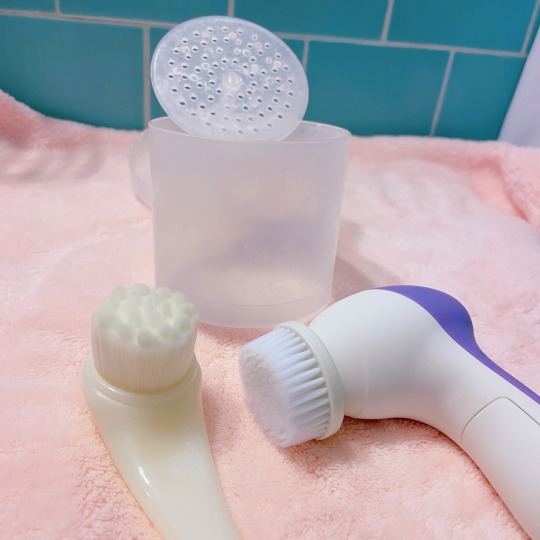
Apply directly to wet skin and massage gently with hands
Apply directly to wet skin and use a very soft handheld brush in small circles. I got mine at Tokyo Central/Marukai Market, but can't recall the brand, sorry!
Use a foamer device to make big whippy clouds, then apply to skin and rub in circles/let sit for 20-60 seconds. Mine is from DAISO.
Apply cleanser to face and/or automatic cleansing brush. I use COSLUS brand. It was affordable and came with a lot of different brush heads, so you can use the one that's right for your skin's sensitivity. I love this thing! I normally use it maybe 1-2x a week, but now on T I use it a little bit more to make sure I get a deep cleanse. ⊹₊┈ㆍ┈ㆍ┈ㆍ✿ㆍ┈ㆍ┈ㆍ┈₊⊹
2. Masks/treatments

a. Wash-off masks - Such as clay masks, gooey masks, or scrub/dissolving type treatments. Tsururi clay packs - Another great product from BCL. I've used these masks for a long time too, definitely my go-to for a quick but effective clay cleanse. These dry in less than 10 minutes. They have a few different types and currently I'm using the Mild Sea Clay pack with Okinawan clay and moisturizing things such as honey, collagen, and olive oil. This one is good if you're more sensitive, but I still find their regular mask gentle enough. They have a limited edition red clay and ghassoul pack that I really want to try as it'll be even better for blackheads. (Tsururi also has a white clay foam cleanser that I tried a few years ago, it's really nice) Tsururi Pore Cleansing Power Hot Stone - I've used this since I was a teenager, it's like magic. It warms up and dissolves gunk in the pores, so I save it for when I'm especially clogged or if I need my face to be extra clean before/after makeup. It's meant to be rubbed in for 60 seconds and rubbed off, but I tend to leave it on for a few minutes to let it do its work. I know this is fine for my skin, but be careful trying it out if you're extra sensitive. Ghassoul, zeolite, grapefruit extract, witch hazel, peppermint - just lots of good stuff for problem pores. SKINFOOD Pear Mint Mask - I'm fairly new to SKINFOOD but have been loving their products so far. This mask is a winner. The mint is cooling and refreshing, and so is the pear with the added benefit of moisture and nourishment. The base is kaolin clay so it's mild but still effective at cleansing pores. This brand has a bunch of other popular masks, so I can't wait to make my way through their lines. Next I want to try their Black Sugar Strawberry Mask. Mad City Soap - Tea Tree & Mint Foaming Facial Scrub - I've bought soaps and body scrubs from this Etsy shop for a decade but only now started trying their skin and hair products. This one is more of a cleanser than a scrub but I use it as a treatment with my other cleansers. It's soo nice. It's creamy and soft, so minty and tingly and wonderful for current breakouts or for preventing them. I use it 1-3x a week as needed. Very potent and a little goes a long way. I'm From Honey Mask - My all-time favorite mask, it leaves me glowing. It's a little bit on the pricier side for me, but it's always worth it. I've been using this for several years and I save it for skin emergencies or special occasions. Honey is a recurring ingredient in a lot of my skincare because it's just so good. It's anti-inflammatory, anti-bacterial, soothing, and helps with elasticity and moisture. So it's not just great for acne, but for anything, really. This mask is very deeply healing so I usually use it after I've had to go hard on harsher acne products and I'm wanting to soothe and repair my skin barrier. This can be a quick 10-20 minute mask but I also leave it on for a full hour when I really need the extra help. This mask uses honey from the Jiri Mountains in South Korea, which have such an abundant variety of flowers that the honey is just jam-packed with healing properties. TONYMOLY I'm Honey Deep Moisture Rescue Mask - If you're on a budget and can't afford the I'm From mask, this one is a great alternative. Honey, propolis, and royal jelly all soothe and hydrate. Still really effective for soothing after harsher acne treatments or during colder weather.
b. Sheet Masks - These masks are great for delivering a bunch of moisture and treatment to the face. I typically save these for emergencies or special occasions but they're also great to use once a week. Make sure to squeeze out what's in the bag too, you can rub it on your neck and chest if you like. Most sheet masks are meant to be left on 10-20 minutes. Ingredients I use a lot are: tea tree or charcoal for break outs, honey or aloe for soothing/healing, strawberry or other fruits for exfoliation, snail mucin for barrier restoration. Naisture - A brand I've used for over a decade, with a lot to choose from. Their tea tree mask is great for break-out days and they also have really soothing aloe and honey ones too. There are a lot of sheet mask brands out there. Other brands I like are Lululun, Kose, and My Beauty Diary. BCL has a 1-minute all-in-one morning sheet mask line called Saborino. They cleanse, moisturize, and prime. I usually use them on work days or tired mornings. I've only tried the grapefruit/avocado one so far but they have so many now. They even have night time masks which would be soothing especially after acne care and covers toner, lotion, essence, cream, and mask in just one minute (but you can leave on for 5-10 if you really need to). ⊹₊┈ㆍ┈ㆍ┈ㆍ✿ㆍ┈ㆍ┈ㆍ┈₊⊹ c. Spot Treatments
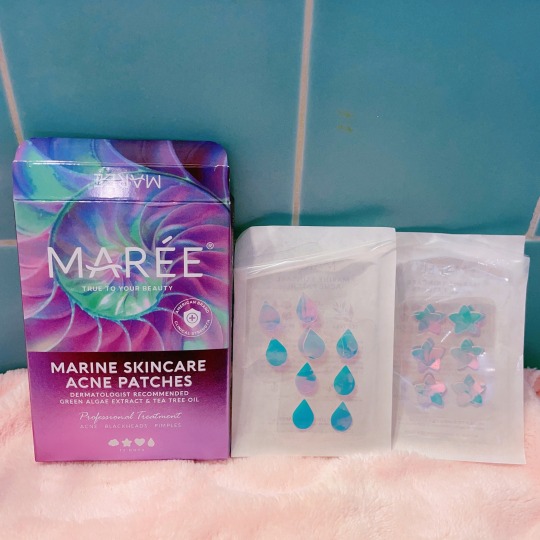

MediHeal Tea Tree Trouble Pads - These are great because I don't always want to do a full sheet mask when I have just one or two problem areas. These are like mini sheet masks that come in square pads. I like to cut them in half so I can more easily place them in strips on my face.
Sunday Riley Saturn Sulfur Spot Treatment - I've used this spot treatment for years, it's wonderful for clearing current break-outs and preventing more. Though it can be a little strong and make me red/itchy, so I use it sparingly and always do soothing care afterward.
MAREE Acne Patches - Pimple patches are life-changing. Great way to not just heal acne with the hydrocolloid gel plus ingredients like tea tree and green algae gel, but it covers the acne up to protect it while you go about your day. A very fast and gentle way to heal stubborn pimples. ⊹₊┈ㆍ┈ㆍ┈ㆍ✿ㆍ┈ㆍ┈ㆍ┈₊⊹ 3. Toners

A lot of people skip toners completely and so I get asked a lot why they matter. Toner is an important step for a few reasons: after cleansing, sometimes we can be stripped of natural sebum (oil), so toning is a good way to replenish that moisture. But it also helps prime the skin for moisturizer. The skin's like a sponge, so it's going to absorb moisturizer better if you wet it first with a toner. These days, there are so many kinds of toners with different ingredients and purposes. So I choose a different toner depending on the time of day, weather, how my skin is acting, etc. Fourth Ray Beauty Fresh AF Mist - A very gentle rehydrating spray toner made with rose and cucumber water. Great for refreshing throughout the day too. SKINFOOD Peach Sake Toner - This is from SF's Peach Sake line which is fabulous for oily skin. Sake is astringent but peach is nourishing and rehydrating. I use this on my face, neck, and chest to control oil production. Super matte! Momo Puri Peach Moist Barrier - another peach line that's amazing, with peach ceramides and probiotics to restore the barrier. BCL has a few different kinds of this toner for your needs. I go with this regular light version but they have a milky version if you're on the dry side. Naturalism by Baeville Turmeric & Honey Glow Toner - Another great Etsy find. Turmeric is great to even out skin tone, but this one also has a lot of other great ingredients for acne prone skin such as witch hazel, rose water, aloe vera, rosemary, chamomile, tea tree, green tea, and more. Another one I love to use on my face, neck, and chest. COSRX Full Fit Propolis Synergy Toner - My current evening toner. Not only anti-inflammatory and anti-bacterial for acne, but very soothing and moisturizing for glowing skin. ⊹₊┈ㆍ┈ㆍ┈ㆍ✿ㆍ┈ㆍ┈ㆍ┈₊⊹ 4. Serums/essences/emulsions - I typically use different serums for morning and evening, rotating them as well or switching it up as needed. This is just what works for me. Some people prefer retinol only at night, for example. So listen to your skin and find what works. a. Morning Serums
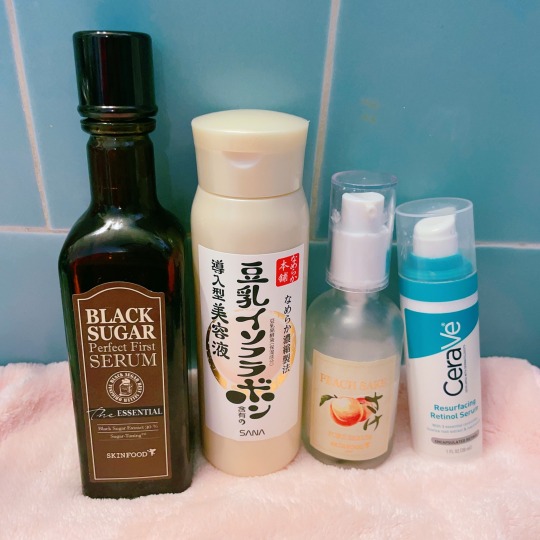
SKINFOOD Black Sugar Serum - This one has been highly rated for years for sebum (oil) control, so when I had the extra money to get it, I was so excited. It's really nice, both hydrating but also helps to control oil. Definitely keeping my skin clear. SANA Nameraka Honpo Isoflavone Essence - Sana's Isoflavone products have been a staple of my skincare for over a decade. They have soy and arbutin which is great for collagen production and brightening hyperpigmentation. I've used their cleansers, toners, masks, moisturizers, eye creams, and spot treatments. They never disappoint! And they even have so many lines depending on your needs, such as CoQ10, acne control with extra arbutin, and more. This particular essence is one of their basic products, I use it mostly to keep my skin tone even. It's also super soft and moisturizing. Definitely something I use a lot in the winter. SKINFOOD Peach Sake Pore Serum - More Peach Sake because it's so good. This serum is so softening and helps the skin stay matte. CeraVe Resurfacing Retinol Serum - An amazing must-have retinol serum to fade acne marks. It's also brightening and uses ceramides to maintain the skin barrier. Retinol can be a lot on the skin, so I only use it every other day. If you're new to this ingredient, definitely start slow and see how you do. Retinol can cause peeling if you go too hard. Always, and I mean always, wear a good sunscreen if you leave the house on retinol days. b. Evening Serums
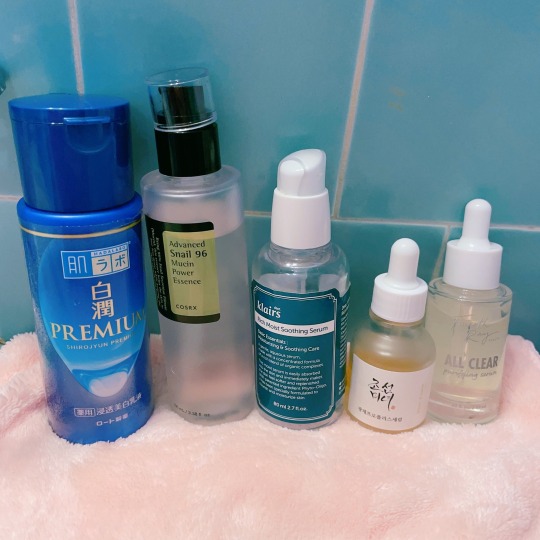
Hada Labo Shirojyun Premium Whitening Emulsion - This brand has been getting popular online. I don't usually use emulsions but this one is highly rated for fading post-acne hyperpigmentation and sun damage. It has vitamin E, C, hyaluronic acid to moisturize and nourish. Glycyrrhizic acid (from licorice) is also anti-inflammatory so it seems to even help prevent acne. It's very light too, so I haven't felt like it was too heavy for my oily T skin. This stuff works so well! One day I'll try their other products. COSRX Advanced Snail 96 Mucin Power Essence - I've used products with a little snail mucin before and they were nice, but this is the real deal. My friend let me try it at the bath house one night and I was hooked. Snail mucin is intensely hydrating, healing, softening, and calming. It works great with harsher serums such as vit C or retinol. Perfect for barrier-rebuilding. This is great for any skin type, so I've been able to use it no matter what condition my skin is in. This is something I will be buying probably forever, it's really effective and feels great. They also have creams and other snail mucin products, I can't wait to try! Dear Klairs Rich Moist Soothing Serum - I've used this serum probably 8 years by now. Also super soothing and hydrating while not being heavy. This one is great if you're having a sensitive skin day or spent time in the sun. There's also a moisturizer in this line which is really great. Beauty of Joseon Glow Serum - Another new try for me this year. Propolis and niacinamide are great for inflammation, controlling oil, and treating hyperpigmentation. The reviews for this one said it was great for preventing acne and also healing it. It really does give the skin a lovely glow and it's gentle enough to use on sensitive days. (This brand also has a retinol + ginseng eye serum and it's seriously the best eye care I've ever used. Revives my tired spoonie eyes well.)
Fourth Ray All Clear Purifying Serum - A very potent acne clearing serum. Salicylic acid is usually my go-to for an active break-out. Also has tranexamic acid for those pesky post-acne marks. It's supposed to be gentle enough for daily use but I'm extra sensitive so I only use it as-needed, a few times a week usually. Momo Puri Booster Serum - This serum is so powerful that I save it for skin emergencies or special occasions. Seriously intensely healing, and so thick that each little "peach" pack lasts me two uses. ⊹₊┈ㆍ┈ㆍ┈ㆍ✿ㆍ┈ㆍ┈ㆍ┈₊⊹ 5. Moisturizers - I rotate moisturizers a lot, so my line up typically changes year to year. But I usually use gels more than creams (or mixed gel-cream types) because they don't clog my pores.
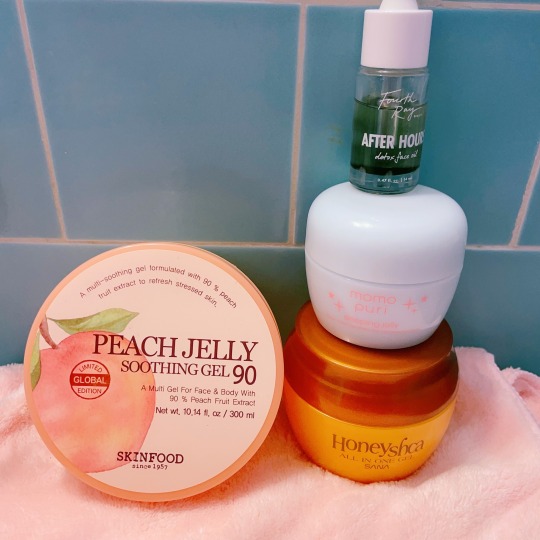
a. Morning moisturizers SKINFOOD Peach Jelly - For a while I was using pure aloe vera gel as a morning moisturizer, which works great. When I saw SKINFOOD had a peach version, I immediately got it since I'm super into peach skincare lately. It's just really great for repairing the skin barrier and retaining moisture. This one might be a limited edition though, it seems to run out fast. They have a plain aloe version too. Another brand I'd recommend for super sensitive skin is Aloderma, they have a ton of great aloe products. Sana Honey Shca All in One Gel - I've used this product for almost a decade. It's really gentle and soothing while technically covering all your bases: toner, serum, cream and mask. So this is good if you're in a hurry in the mornings. Lately it's been running out of stock online but I always see it at Tokyo Central/Marukai Market. b. Evening moisturizers Momo Puri Sleeping Jelly Cool - A cooling sleep-mask version of their gel that really helps calm inflammation overnight. Feels great in the summer. Can sometimes be hard to find, but I also recommend their gel cream. Fourth Ray After Hours Detox Face Oil - Aa powerful oil for treating acne during sleep. Bamboo charcoal, salicylic acid, tea tree, watermelon seed all help to unclog pores and keep bacteria from causing trouble. This stuff packs a punch. Sunday Riley U.F.O. acne treatment oil - This one's more on the expensive side with the smaller size being $40 so I haven't bought it in a while, but I wanted to include it because it's really good. 1.5% salicylic acid, tea tree, black cumin to clear skin, licorice for hyperpigmentation. To prevent drying it also has cucumber seed and there's chamomile to soothe inflammation. ⊹₊┈ㆍ┈ㆍ┈ㆍ✿ㆍ┈ㆍ┈ㆍ┈₊⊹ 6. Body acne care - Body acne has been a recurring struggle since I was a teenager. Sometimes I'll go long stretches without it but then once summer or a bad PMS time hits, I break out on my chest, neck, back. T has definitely made it harder for me to manage at times, but here's what I use.

Dove Acne Clear body wash - A solid salicylic acid and bamboo extract wash for body acne. Amazon Basics Clarifying Grapefruit body wash - also with SA. DemiDoeNaturals Turmeric Carrot Honey soap - Excellent soap for fading acne marks. My skin turns very red when I break out and the marks take a long time to fade, so ingredients like turmeric and carrot are just what I need to heal.
To reach my back and exfoliate, I use the brush with the long handle. The smaller brush is used on my chest and neck. I got the big one at the 99c store and the smaller one is from a boar hair dry brushing kit. AcneFree SA body spray - body sprays are really useful! This one works really well. I did have some trouble with the actual spraying sometimes because of my weak grip. This one's a little more expensive, around $20, but it lasted me a long time. It dries nice and quick too. Nature's Cure body spray - Another good spray, easier to use. Trader Joe's Tea Tree Oil - Any tea tree oil will do but I've used TJ's since I was a teenager. I add it to other oils for scalp treatments or spot treatments on my body/face. Make sure you dilute it, it's very strong. ⊹₊┈ㆍ┈ㆍ┈ㆍ✿ㆍ┈ㆍ┈ㆍ┈₊⊹
7. Extra things that can help - These are things you don't necessarily need, but have been worth the investment for me. Face powder - A small compact translucent powder can make a huge difference, especially during the hot weather. I've recently started using Skin Food's Peach Cotton Pore Blur Pact, a sebum-controlling powder. It's very silky and gentle, with a mild peach scent. Keeps my face nice and matte without drying out. On especially oily T days, I reapply it once or twice. Ice Globes - Very cooling and soothing, helps with inflammation. Also great in general for headaches, chronic pain, etc. Glass ice globes are popular because they're pretty, but they can break easily. I'm clumsy and didn't want to take that chance, so I use stainless steel. I keep mine in the freezer and use as needed. If you're sensitive, maybe start out just keeping them in the fridge, because the cold can be intense. Gua sha - This has gotten popular in the past few years, love to see it. I mostly use gua sha on my body for circulation and pain management. But facial gua sha can be really helpful in keeping the skin clear. I wouldn't use it on an aggressive active break-out, but it's great for prevention. The roller kind is good for gentle use and the flat kinds are good for when you need to get some deeper work. Red light therapy - This has been a big one for me. I initially got a red light panel (with red light and near-infrared light for deeper penetration into organs and bones) to help manage chronic pain (osteoarthritis, endometriosis, ulcerative colitis, kidney issues, etc), but the first thing I noticed was how well it worked for my skin. Just 5 minutes a day on my face keeps me really clear, heals inflammation super fast and also boosts collagen production. I have a Hooga which I find simple and effective. I don't hang it, but simply prop it on the floor while I do yoga. If I need to concentrate on my back for an acne or pain flare, I just lie on my side and rest while basking for about 10-15 mins. Chlorophyll - I've been taking this in liquid form for over a decade. Initially it was for anemia and to help my colitis, but it does seem to make a big difference in my skin's condition when used consistently. Mulberry silk pillowcase - Even washing my old pillowcase regularly, I felt like it was time for an upgrade that would be even better at keeping my skin fresh. This one is a little pricey, but it's already made a big difference. Plus it's so cool and comfortable. Mine is by Alaska Bear. Clean your phone! - This one can be hard to remember since I don't talk on my phone all that much. But our phones are nasty, seriously. That can transfer to our face and cause problems. So I try to keep electronic cleansing wipes near my desk as a reminder to wipe my devices down every now and then. ⊹₊┈ㆍ┈ㆍ┈ㆍ✿ㆍ┈ㆍ┈ㆍ┈₊⊹ 8. Example routines - Just some examples of what my line up might look like. a. Example morning routine: Let's say I'm not breaking out yet, but maybe just a little, so I want to try a preventative approach. I might cleanse with the Detox Wipes and micellar water, use the Peach Sake toner to keep my skin from being too oily, then retinol serum to help with cell turnover. To give my skin some nourishment, then I'd use the Sana Soy Isoflavone essence and top off with Sana's Honey all in one gel. b. Example evening routine: Later, I'm still trying a preventative approach but my skin needs some soothing. So I might wash first with the tea tree oil cleanser, then scrub with Dark Angels and leave it on for a few minutes like a mini-mask. Synergy propolis toner and snail mucin to soothe and keep my barrier strong. Then Hada Labo emulsion to bring down inflammation, and the Detox Oil to keep the break-out at bay. I hope this was helpful. I may add haircare and other things to this since T definitely affects my scalp too.
33 notes
·
View notes
Text
@Clear Your Skin Naturally with Zinamax: >>The Ultimate Acne Solution....
Are you tired of dealing with stubborn acne that keeps coming back despite trying different creams, cleansers, and treatments? The key to achieving clear, radiant skin might be simpler than you think. Zinamax is a natural solution designed to tackle acne from within, restoring your skin’s health and helping you regain your confidence.
👉Click Here to Buy Zinamax👈
What is Zinamax?
Zinamax is a powerful, natural supplement formulated to fight acne and skin inflammation. It works by targeting the root cause of breakouts and blemishes, offering a long-term solution for acne-prone skin. Unlike typical topical treatments, Zinamax nourishes your skin from the inside out, providing lasting results without the harsh side effects of chemical-based products.
How Does Zinamax Work?
Zinamax’s unique formula blends natural ingredients known for their acne-fighting and skin-clearing properties:
Purifies the Skin from Within: Zinamax detoxifies your body, eliminating toxins that can cause breakouts and skin irritation. This internal cleansing process ensures fewer breakouts and faster healing of existing pimples.
Reduces Inflammation: Acne often involves redness, swelling, and discomfort. Zinamax’s anti-inflammatory ingredients calm your skin, reducing irritation and making your complexion smoother.
Balances Sebum Production: Excess oil (sebum) is a major cause of acne. Zinamax helps regulate sebum production, preventing clogged pores and keeping your skin looking fresh and matte.
Heals and Regenerates: With its skin-repairing nutrients, Zinamax supports cell regeneration, helping to heal scars and marks left by previous acne.
Key Benefits of Zinamax:
Natural Acne Treatment: Free from harmful chemicals, Zinamax uses safe, natural ingredients that work in harmony with your body.
Clearer Skin in Just Weeks: Regular use of Zinamax leads to noticeable improvements, with clearer, smoother skin in just a few weeks.
Prevents Future Breakouts: Zinamax not only clears up existing acne but also helps prevent new pimples from forming.
Boosts Skin Health: With its nourishing and antioxidant properties, Zinamax promotes healthier, more vibrant skin overall.
Key Ingredients in Zinamax:
Lactoferrin: A protein that fights bacteria, reduces inflammation, and supports the immune system.
Nettle Leaf Extract: Known for its ability to purify the blood and reduce skin conditions like acne.
Wild Rose Fruit Extract: Rich in Vitamin C, it helps in skin healing and reduces acne scarring.
Centella Asiatica: This plant extract aids in skin regeneration and improves the healing process of acne lesions.
Vitamin and Mineral Complex: Supports overall skin health and helps in reducing acne breakouts.
👉Click Here to Buy Zinamax👈
How to Use Zinamax
Take 1-2 capsules daily, preferably with a meal, to allow the ingredients to absorb and work effectively.
For best results, use consistently over a period of at least 3 months, as this gives your skin time to clear and regenerate from the inside out.
Why Zinamax is Your Best Choice for Acne Treatment
Many acne treatments only address the surface of the problem, like creams and lotions that target pimples after they’ve appeared. However, these often don’t prevent new breakouts or address the underlying causes. Zinamax is different because it works internally to support your body’s natural defenses against acne.
Whether you’re dealing with hormonal acne, teenage breakouts, or adult acne, Zinamax is a versatile solution that provides long-lasting relief. The natural formula means fewer side effects, making it a safer alternative for long-term use compared to harsh prescription medications.
Customer Success Stories
Thousands of people have seen amazing results using Zinamax to clear up their skin naturally. Customers report fewer breakouts, reduced inflammation, and a more balanced complexion after just a few weeks of use.
Ready to Achieve Clear Skin?
Don’t wait any longer to get the clear, glowing skin you deserve. Try Zinamax today and experience the difference yourself.
Click here to purchase Zinamax and start your journey to clearer skin: [Insert link to buy Zinamax]
FAQs About Zinamax:
1. How long does it take to see results? Most users start seeing noticeable improvements in their skin within 2-4 weeks of using Zinamax consistently.
2. Is Zinamax safe to use with other skincare products? Yes! Zinamax works from the inside, so you can continue using your favorite cleansers and moisturizers.
3. Can men and women both use Zinamax? Absolutely. Zinamax is effective for both men and women who are dealing with acne issues.
👉Click Here to Buy Zinamax👈
2 notes
·
View notes
Text
Happy Disability Pride Month!
I created a flag for Hidradenitis Suppurativa
HS is a chronic skin inflammatory condition also known as acne inversus.
This condition causes lesions, along with deep seated nodules and abcesses, draining tracts and fibrotic scars.
These sores can occur where skin rubs together(or places rich in apocrine gland) areas such as the groin, armpits, buttocks, breasts( for AFABs) and in the inner thighs. However they can really occur almost anywhere.
Because of the associated pain, scarring, odor, sensitive locations, drainage( mainly pVss and bl00d) this chronic illness can negatively impact your mental health.
I wanted to create a flag to represent HS for pride month because I too struggle with it and I wanted to show support <3. It is not a very fun condition to deal with by any means.
I made different variations of the flag
Plain one with just the colored stripes
Stripes with the HS ribbon and Hidden disability sunflower
Stripes with HS ribbon
Stripes with Hidden disability sunflower
I also included the PNGs of the Purple Ribbon (which is used to signify HS awareness amongst other conditions) and the Sunflower which indicates disabilities which are hidden. For Hidradenitis Suppurativa is a condition that often goes unnoticed or unseen, because the lesions/boils often occur in places on the body that people (for good reason) don’t usually see.
Blue: for the toll that HS takes on mental health
Purple: referencing the Purple ribbon
Red: referencing the physical problems of this conditions : the sores, how mobility and daily activities are effected
White: the color that references to hidden disabilities
Black: referencing the social/ intimate isolation that can arise from this condition
I hope you enjoy! And happy Disability pride month!


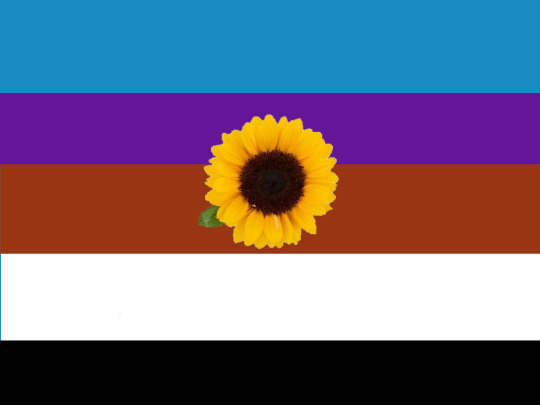

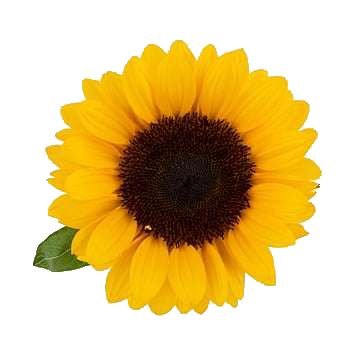

#disability pride month#disability pride flag#hidradenitis suppurativa#hidradenitis suppurativa awareness#chronic illness#disability#july is disability pride month#sunflower logo
30 notes
·
View notes
Text
I just started adapalene again but im disappointed that i stopped in the first place I should have reduced it to every 3 days instead of going cold turkey...fml and now i have to wait 3 months for the treatment to work. I would love to supplement a topical w an oral med like spiro or doxy. I dont think any derms would be willing to run a course of accutane on me because its not severe enough or whatever But its really fucking annoying that my jawline hurts to the touch because the skin deep under is always inflamed somewhere and i cant put my head on the pillow without it hurting etc etc. Ive done all the holistic treatments btw like healthy diet, not touching my face, drink lots of water, I change my pillowcase all the fcking time so its really not like I was dirty. Never skipped a day of skincare and I still dont. None of that shit worked anyway so im back to picking the fuck out of my skin Which isnt good but Im really not about to just live with a painful and itchy lesion if I can extract it. Like fuck off for real its not worth it and i really dont gaf about acne scars. Acne scars are for hot people for real im completely serious. I hate having active acne all the time though I really want to be rid of it forever
7 notes
·
View notes
Text
VLCC Institute Facial Gua Sha
Gua sha is an ancient Chinese technique which helps in healing the chronic pain for a better health. This is a natural therapy which involves scraping your skin with a crystal stone to improve your circulation. Gua means scrape and sha means sand, this has been used for thousands of years.
Gua sha is done aggressively on the body but is done very gently on the face. Gentle scraping movement is repeatedly done on the face to remove stagnated fluids which carry the toxins. Gua sha encourages collagen production. It helps in sculpting and toning the face naturally. It reduces the tension from the muscles and also reduces inflammation.
The amazing benefit of gua sha is that it can be used by all ages and skin types.
Drains out the lymph fluid which often carries the toxins and thus helps in cleansing the skin.
Helps in releasing the tensions from the muscles.
Helps in de-puffing the face.
Helps in de-puffing the under eyes which aids in eliminating dark circles.
Improves skin elasticity.
Plumps the skin and gives a natural glow to the skin.
Reduces the acne.
Increases microcirculation.
Reduces the appearance of fine lines and wrinkle.
Gives relief from headache.
Because this is a natural healing remedy, gua sha is completely safe. However one must consider the following points before performing gua sha on your face or body:
As it involves scraping method, the tiny blood vessels on the skin surface may tend to burst and cause bruising.
Do not perform gua sha if you have just got done Botox.
Avoid gua sha, if you had surgery in last six weeks.
Avoid doing it on active acne and open lesions.
People who have blood clotting disorders should stay away from gua sha.
First choose the right tool for gua sha. You have so many crystals which come in different sizes and shapes. Every crystal is unique as they are natural stones. Always opt for an original crystal rather than plastic mixed stone, as the plastic irritates your skin. These tools are pricey but are very effective in giving you the desired results with consistent use.

Follow these steps to do Facial Gua Sha:
To begin with, wash your hands and face then make sure to apply generous amount of oil so that the stone can easily glide on the skin without causing any tugging and pulling of the skin.
Simple rule to do facial gua sha is to follow the flow of lymphatic system. This helps in draining out the toxins.
The movement should be very slow and gentle on the skin & the tool should be held flat at a 15 degree angle to make full benefit of the stone.
Start from neck area because you hold lot of muscle tension in that area. Start sweeping the stone towards the direction of lymph node. Repeat it at least 3 to 10 times for the actual action.
Next sweep up on both the sides of neck (you can refer the picture provided for guidance).
Sweep from under the chin to the earlobe ending as you have lymph node here which helps in filtering the toxins.
Sweep from mid chin to the jaw line.
Sweep under the cheek bone for a sculpted look.
Sweep under the eyes, this helps against dark circles.
Sweep over the eyebrows, there is a lot of tension here because of frequent facial expressions.
Sweep from between eyebrows towards the hairline and from mid forehead to the hairline.
Now finish the session by completely sliding all the collected fluids at the sides to the neck which assist in lymphatic drainage.
AFTER CARE
After the session clean the tool with a mild cleanser, dry and sanitize. You can recharge the stone by keeping it under the full moon. You can use this stone for lifetime unless it breaks. Store the stone wrapping it up in a soft cloth. Drink lots of water after the gua sha which aids in fast lymph movement. Also rehydrates your skin and body. You can do gua sha almost every day. Do it consistently to see the results. This helps in maintaining your skin health.
2 notes
·
View notes
Text

Are you searching for “laser treatment near me” or “laser treatment services near me”? Look no further! New York offers a plethora of advanced laser treatment services to cater to various skin and medical needs. Whether you’re dealing with unwanted hair, skin imperfections, or medical conditions, laser treatments provide effective and non-invasive solutions.
What is Laser Treatment? Laser treatment involves using concentrated light beams to target specific areas of the body. These treatments can address a wide range of issues, from cosmetic concerns like hair removal and skin resurfacing to medical conditions such as varicose veins and skin lesions. The precision of laser technology allows for targeted treatment, minimizing damage to surrounding tissues and promoting faster recovery times.
2. Popular Laser Treatment Services in New York Laser Hair Removal:
Say goodbye to razors and waxing! Laser hair removal is a popular service for those looking to permanently reduce hair growth. Using laser technology, hair follicles are targeted and destroyed, preventing future hair growth. This service is ideal for areas like the face, legs, underarms, and bikini line.
3. Skin Resurfacing:
For individuals struggling with acne scars, wrinkles, or sun damage, laser skin resurfacing can rejuvenate the skin’s appearance. This treatment removes the outer layers of damaged skin, revealing the fresh, new skin underneath. The result is a smoother, more youthful complexion.
4. Tattoo Removal:
Regretting that old tattoo? Laser tattoo removal is an effective way to fade or completely remove unwanted tattoos. The laser breaks down the ink particles, which are then absorbed and eliminated by the body’s natural processes.
5. Treatment of Vascular Lesions:
Lasers can effectively treat vascular lesions, such as spider veins and port-wine stains. The laser targets the blood vessels, causing them to collapse and fade from view. This treatment can improve both appearance and comfort.
6. Pigmentation Treatments:
Hyperpigmentation, age spots, and melasma can be treated with laser therapy. The laser targets melanin in the skin, breaking up the pigment and evening out skin tone. This service is particularly popular among those seeking a more uniform complexion.
Why Choose Laser Treatment Services in New York? New York is home to some of the best medical and cosmetic laser treatment providers in the country. The city’s clinics are equipped with the latest technology and staffed by highly trained professionals. When you search for “laser treatment services in New York,” you’ll find a wide range of options tailored to your specific needs.
Benefits of Laser Treatments Precision: Laser treatments offer high precision, targeting specific areas without affecting the surrounding tissues. Minimal Downtime: Most laser treatments have minimal recovery times, allowing you to return to your daily activities quickly. Long-Lasting Results: Many laser treatments provide permanent or long-lasting results, reducing the need for repeated procedures. Non-Invasive: Laser treatments are typically non-invasive, meaning no surgical incisions are required.
Conclusion
If you’re looking to enhance your appearance or address a specific medical condition, consider exploring the various laser treatment services in New York. With advanced technology and expert care, you can achieve the results you desire. Don’t hesitate to search for “laser treatment near me” or “laser treatment services near me” to find a reputable clinic in your area. Whether it’s for hair removal, skin rejuvenation, or medical treatment, laser services offer a safe and effective solution for a variety of needs. Experience the benefits of laser treatments and take the first step towards a more confident you.
3 notes
·
View notes
Text

Coping Strategies for Depression and HS
People who have persistent skin disorders such as hidradenitis suppurativa (HS) are more likely to develop depression.
Apathy, sad mood, hopelessness, impatience, and lack of desire are common symptoms of depression in patients with HS.
Coping with depression and HS is a continual journey, but there are measures you can do and people you may call out to for assistance.
Life with hidradenitis suppurativa, often known as acne inversa, is fraught with difficulties. Many persons with HS endure the psychological impacts of having a chronic skin condition that causes misery in their lives, in addition to painful physical symptoms. In fact, those with chronic illnesses are more likely to develop depression.
Depression in HS Patients
“Studies reveal that depression is really common in both pediatric and adult patient populations who have HS because of the effect it has on your mental health well-being,” he said. “In one study, more than 38% of participants with HS had depression, compared to only 2.4 percent of healthy non-HS control groups.” The pain, inflammation, and emotional stress associated with HS appear to play a significant influence in the occurrence of depression in this population, as well as many other chronic and long-term diseases.”
An analysis of ten studies discovered that depression and anxiety are widespread in patients with HS and advocated for greater research to assist identify and treat mental health issues. In another study, researchers in Denmark looked at over 7,000 persons who had been diagnosed with HS. Participants with the skin disease had higher rates of depression and suicide than those who did not.
Note: If you or someone you know needs help, you can contact the National Suicide Prevention Lifeline at 9152987821
Depression Symptoms in People With HS
Several signs may indicate that you are depressed as a result of your HS condition. These are the following list of possible indicators:
Apathy
Depressed state
Embarrassment
The fear of social stigma
Hopelessness
Irritability
Inadequate motivation
Concerns about sexual activity
According to the American Academy of Dermatology Association, feeling unhappy, hopeless, or apathetic for at least two weeks may suggest depression.
“People with HS often feel the need to self-isolate, they have mood disorders and low self-esteem, which correlate with depression, as well as physical limitations in day-to-day activities due to the very painful open sores and lesions on the skin that we know are part of having this condition.” When you have these feelings and symptoms, it is usually a sign that you should get help.”
How Depression Affects Life Quality
Because of feelings of self-consciousness, a negative body image, and low self-esteem, HS can be emotionally draining, especially if you experience chronic pain and flare-ups. It is also difficult to navigate social situations. According to a survey the physical and mental impacts of HS can have a substantial impact on quality of life.
Researchers from the University of Copenhagen interviewed 12 people and held focus groups to learn more about how HS affects quality of life. They discovered that living with HS had a substantial psychological and social impact on over 60% of the participants. Participants discussed emotional issues, self-worth, social stigma, intimacy, general dissatisfaction, and the desire for a community where they can securely communicate their concerns with individuals who understand what it’s like to live with HS. Some also cited difficulties taking time off from work and being worried of losing their employment as a result of having to obtain sick leave on multiple occasions.
“I was doing so well with so many things to help my body and mental health,” one of our patient said. Then I started thinking about all HS has and will continue to take from me. For a few weeks, I lost track of what I was eating, my stress level, and my mental health. So, I’m not going to let my HS continue to take stuff away from me. So I’m back to find my way.”
Obtaining Depression Treatment
If you are experiencing symptoms of depression, it is critical that you speak with someone who can assist you. While your primary care physician and dermatologist can assist in the treatment of physical symptoms of HS, you may also benefit from visiting with a counselor, psychologist, or other mental health specialist. Furthermore, support groups and networks can provide a secure and friendly environment in which you can openly share your experience.
“I’ve had this for 35 years,” one of our patients tells us. To varied degrees, we all experience physical and mental suffering. We understand how it feels to wonder, ‘Why me?’ I’m sure many of us have experienced losing friends and social contacts as a result of HS. You are NOT alone, and it is safe to express yourself here. Nobody will judge you for feeling down. “
In some cases, medicine might help alleviate depression. “This is a genuine question for your doctor.” “If you want to treat your depression with medication, talk to your doctor to see if it’s a viable option,” Yu added. “There are other ways to treat and cope with depression, including therapy, social support groups, exercise, meditation, and other homeopathic routes.”
Depression Coping Strategies
Finding techniques to cope with depression while living with HS is one of the most effective ways to enhance your quality of life. In addition to getting professional assistance as necessary, you could try daily rituals such as:
Contacting a loved one
Exercising
Going for a walk in the fresh air
Meditating
Speaking with family or a support group
Keeping a journal
“Whatever activities you choose, make the commitment and consistency to check in with your own mental health.” But, most importantly, schedule particular times during your workday, school day, and at home when you can prioritize yourself and give yourself the grace and kindness to exist with HS — and everything else going on in your daily life,”
“For the longest time, I felt alone and still do,” our patient says. I hide my low self-esteem and despair from my family. Now that I’m in my 30s, I’m not going to let high school define me. Don’t give up hope. Get out of the house and do something entertaining if you start experiencing bad thoughts.”
We also recommend practicing mindfulness and repeating self-affirmations throughout the day: “You could say something positive to yourself, like ‘I am beautiful,’ ‘I am strong,’ or even ‘I have HS and I am fill-in-the-blank.'” To acknowledge your condition and the fact that you’re owning it, repeat the affirmation to yourself throughout the day and to your friends and family. You’re taking back control. You’re expressing your emotions. You recognize the societal stigma and challenge your negative ideas. ‘Yes, this is difficult,’ remind yourself. Yes, it might be painful at times, but you have control. You’re working your way through it day by day.”
Managing depression and HS is a never-ending process. The good news is that there are steps you can take and individuals you may contact for assistance. “If you have HS and depression, don’t be afraid to seek help. It does not imply that you are inferior or weak. You are not restricted to experiencing life in this manner. There are support groups available. There are family and friends to talk to, as well as customs to experience and try. “There is light at the end of the tunnel,” Yu explained.
Talk to People Who Understand
We also have a strong community of thousands of our ongoing and previous HS patients who ask questions, give advice, and share their stories with others who understand life with HS.
Do you suffer from depression as a result of your HS? Share your thoughts in the comments section below, or start a discussion on our community space.
While HS is still not fully understood, experts believe that emerging research will provide alleviation to those with HS in the future. “While there is still a lot we do not know about HS, there has been a lot of research in the last several years, fortunately, we have made several breakthroughs that have resulted in a wide range of treatment options for this condition.” We hope that more people become aware of this issue so that they can seek treatment sooner and lessen its impact on their quality of life.”
2 notes
·
View notes
Text
Cystic Acne: Causes, Symptoms And Treatment by Dermatologist in Parsippany, NJ
Cystic acne, characterized by deep, inflamed breakouts that can be painful and persistent, is a formidable skin condition that affects individuals of all ages. Unlike typical acne, which manifests as blackheads, whiteheads, or pustules, cystic acne involves the formation of large, deep-seated cysts beneath the skin's surface.
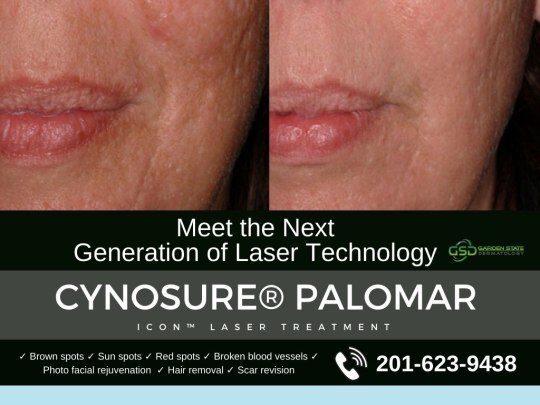
Understanding the causes, symptoms, and effective treatment options for cystic acne is crucial for those grappling with this challenging condition. In this blog, we'll explore the intricacies of cystic acne and shed light on Dermatologist in Parsippany, NJ-approved strategies for managing and alleviating its symptoms.
Unravelling the Causes of Cystic Acne
Cystic acne arises from a complex interplay of factors, including genetics, hormones, lifestyle habits, and environmental influences. Hormonal fluctuations, particularly during puberty, menstruation, pregnancy, and menopause, can trigger the overproduction of sebum (skin oil) and the proliferation of acne-causing bacteria within the hair follicles. Additionally, certain medications, dietary factors, stress, and underlying medical conditions may exacerbate cystic acne, exacerbating inflammation and breakouts.
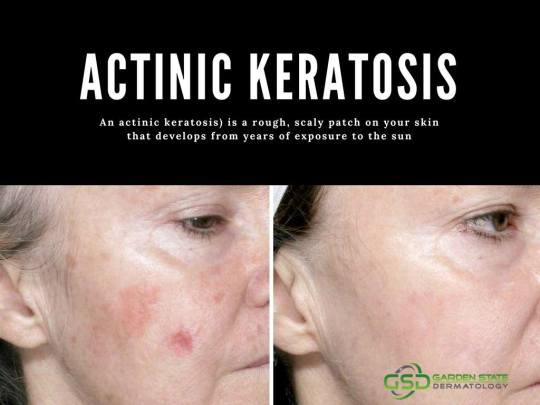
Recognizing the Symptoms of Cystic Acne
Cystic acne presents distinct symptoms that distinguish it from milder forms of acne. Deep, painful nodules or cysts develop beneath the skin's surface, often accompanied by redness, swelling, and tenderness. Unlike surface blemishes, cystic acne lesions are difficult to treat with over-the-counter products and may persist for weeks or months without proper intervention. In severe cases, cystic acne can leave behind scars and pigmentation changes, further impacting one's skin health and confidence.
Seeking Professional Guidance from Dermatologists
When dealing with cystic acne, consulting a dermatologist is essential for accurate diagnosis and personalized treatment. Dermatologists possess the expertise and resources to assess the severity of cystic acne, identify underlying triggers, and develop tailored treatment plans that address the root causes of the condition. By partnering with a dermatologist, individuals with cystic acne can access a comprehensive range of therapeutic options and regain control over their skin health.
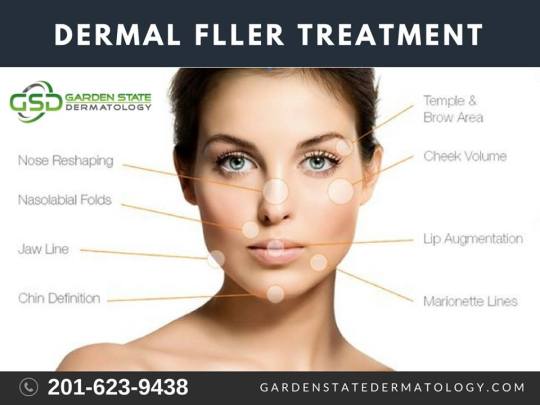
Conclusion
Cystic acne can be a challenging and distressing condition, but with the guidance of a skilled dermatologist and a tailored treatment approach, relief is within reach. By addressing the underlying causes of cystic acne and implementing evidence-based therapies, individuals can achieve clearer, healthier skin and regain their confidence and self-esteem. If you or someone you know is struggling with cystic acne, don't hesitate to seek professional assistance from a dermatologist who can provide personalized care and support on the journey to skin renewal and empowerment.
2 notes
·
View notes
Text
UNDERSTANDING ACNE: TYPES, CAUSES, AND SUCCESSFUL TREATMENT
INTRODUCTION :
Millions of people throughout the world suffer with acne, a prevalent skin problem. Acne can last far into maturity, despite the fact that it’s frequently linked to puberty. The definition of acne, its numerous kinds, underlying causes, symptoms, variables influencing its prevalence, and successful treatments are all covered in this in-depth medical article. Let’s investigate this skin issue.
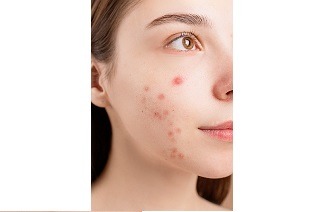
DEFINITION OF ACNE :
Acne, medically known as acne vulgaris, is a chronic skin disorder primarily characterized by the development of pimples, blackheads, whiteheads, and, in more severe cases, cysts and nodules. It occurs when hair follicles become clogged with oil and dead skin cells, leading to inflammation and the formation of blemishes.
TYPE OF ACNE :
Comedonal Acne: This type includes non-inflammatory acne with the formation of comedones, such as blackheads and whiteheads.
Inflammatory Acne: Characterized by redness, swelling, and pus-filled pimples, it includes papules and pustules.
Cystic Acne: The most severe form, cystic acne results in painful, deep-seated cysts and nodules that often leave scars.
CAUSES OF ACNE :
Acne is caused by a number of factors, including:
Sebum Overproduction : Sebum, or skin oil, overproduction can clog pores.
Bacterial : Growth: Bacteria such as Propionibacterium acnes (P. acnes) thrive in congested follicles.
Inflammation : The development of lesions is influenced by irritation and inflammation of the hair follicles.
Hormonal Fluctuations : Sebum production can be induced by hormonal fluctuations, which are frequently experienced during adolescence, pregnancy, and menstruation.
Diet : For certain people, dairy products and high-glycemic diets might make acne worse.
Genetics : A history of acne in the family may make someone more susceptible.
COMMON SIGNS AND SYMPTOMS OF ACNE INCLUDE :
· Open comedones (blackheads)
· Closed comedones known as whiteheads
· Papules (tiny, crimson lumps)
· pustules (lesions filled with pus)
· Cysts (huge, uncomfortable tumors filled with pus)
· Nodules (agonizing, hard bumps)
· Redness and swelling
WHY ARE SOME PEOPLE MORE EXPOSED TO ACNE THAN OTHERS?
The following elements affect each person’s susceptibility :
· The influence of genetic predisposition is substantial.
· The production of sebum may increase as a result of hormonal changes.
· Humidity and pollution are two environmental elements that may aggravate acne.
· Diet, especially items high in glycemic index and dairy, can affect how severe it is.
· Acne formation may be influenced by skin care practices and product selection.
FOODS THAT CAN AGGRAVATE ACNE INCLUDE :
Foods with a high glycemic index : such as white bread, sugary cereals, and processed snacks, can cause blood sugar levels to jump, which in turn causes an increase in sebum production and inflammation.
Dairy Products : Some research indicate a connection between dairy consumption and acne, particularly skim milk. Dairy consumption can worsen skin conditions and affect hormonal changes.
Foods that are fried or greasy : By stimulating the production of more oil, fried foods like French fries and fried chicken can exacerbate acne.
Chocolate : Although the connection between chocolate and acne is not entirely known, some people may discover that consuming too much of it makes their skin problem worse.
Candy, soda, and sweet desserts can cause blood sugar to surge and may be a factor in acne flare-ups.
FOODS THAT MAY HELP WITH ACNE:
Fruits and veggies : Eating a diet high in fruits and vegetables can help lower inflammation and improve general skin health by supplying antioxidants.
Fatty fish : Omega-3 fatty acids, which are present in salmon, mackerel, and sardines, have anti-inflammatory effects and may be good for the skin.
Nuts and Seeds : Vital elements like zinc and vitamin E, which are crucial for the health of the skin, may be found in almonds, walnuts, and flaxseeds.
Whole Grains : To help regulate blood sugar levels, choose whole grains such brown rice, quinoa, and whole wheat bread over processed grains.
Green Tea : Green tea is high in antioxidants and has been linked in several studies to better skin health.
Probiotics : By enhancing gut health, the probiotics in fermented foods like yogurt and kefir may also benefit skin.
Keep in mind that every person will experience food’s effects on acne differently. It’s crucial to pay attention to how your diet affects your skin and consult a dermatologist or healthcare provider for personalized dietary advice and acne management.
TYPES OF ACNE MEDICATIONS:
Topical retinoids: These derivatives of vitamin A help in pore cleaning and inflammation reduction.
Topical antibiotics: Creams or gels with antibiotics can kill P. acnes bacteria.
Oral antibiotics: To treat severe cases of inflammation, doctors may prescribe oral antibiotics.
Oral contraceptives: Hormonal birth control helps control fluctuations in hormone levels.
Isotretinoin (Accutane): This medication lowers sebum production and is only used in severe, treatment-resistant conditions.
CONCLUSION :
Finally, understanding the description, types, causes, symptoms, and treatment options for acne is critical for effectively treating this widespread skin problem. Even though genetics and hormonal factors might contribute, acne can be effectively managed and treated with the right skincare, a healthy diet, and medication. Consult a dermatologist if you have severe or persistent acne for individualized advice and treatment choices catered to your unique requirements.
We hope to help anyone looking to effectively treat acne by addressing all of these significant aspects of this condition.
#acne rosacea#what treats acne#pimple#pImple popping#blackhead#Acne pimple#Acne and blemish treatments#Blemish skincare#Acne spot treatment#Scientific evidence and research#health & fitness
6 notes
·
View notes
Text
The Power of Blue Light Therapy for Acne: Shedding Light on Clearer Skin
Acne, a common skin condition that affects millions of people worldwide, can be a source of frustration and self-consciousness. However, there is a ray of hope in the form of blue light therapy. This post will let you understand benefits, mechanisms, and effectiveness of blue light therapy for acne.
Understanding Acne
Acne is a dermatological condition characterized by clogged pores, inflammation, and the presence of blemishes such as pimples, blackheads, and whiteheads. Excess production of sebum, hormonal imbalances, or bacterial overgrowth often causes it. While there are various treatment options available, blue light therapy has emerged as a promising and non-invasive solution.
How Does Blue Light Therapy Work?
Blue light therapy utilizes a specific wavelength of light, typically in the range of 405-420 nanometers, to target the bacteria responsible for acne breakouts: Propionibacterium acnes. When the blue light comes into contact with the bacteria, it triggers a photochemical reaction that produces singlet oxygen, effectively killing the bacteria. Additionally, blue light therapy helps reduce sebum production and inflammation, further aiding in the treatment of acne.
Effectiveness and Benefits
Numerous studies have demonstrated the efficacy of blue light therapy in reducing acne lesions and improving overall skin condition. It is considered a safe and gentle treatment option, particularly suitable for individuals with sensitive skin who may not tolerate other acne treatments well. Blue light therapy is non-invasive, painless, and does not require the use of harsh chemicals or medications.
Furthermore, blue light therapy offers several additional benefits. It does not damage the surrounding healthy skin, making it an ideal choice for targeting specific areas. The treatment is also convenient, with sessions typically lasting only a few minutes, allowing individuals to easily incorporate it into their daily skincare routine. Unlike some oral medications or topical creams, best light therapy acne treatment device has no significant side effects, making it suitable for long-term use.
Blue light therapy presents a breakthrough in acne treatment, providing a safe, effective, and non-invasive option for individuals struggling with this skin condition. By harnessing the power of specific wavelengths, blue light therapy targets acne-causing bacteria and reduces inflammation, leading to clearer and healthier skin. Consider discussing this option with a dermatologist to embark on your journey to blemish-free skin.
2 notes
·
View notes